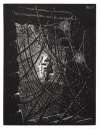Paul
Gauguin
Paul Gauguin is a prominent figure in Symbolist and Post-Impressionist Art. He is known for his experimental use of colour and native scenes that break away from the realism and conventional subject matter of European painting. If you’re looking for original Paul Gauguin works for sale or wish to sell, request a complimentary valuation and explore our network’s most in-demand works.
Paul Gauguin art for sale
Discover Paul Gauguin prints for sale, exclusively available through our private network of collectors. Explore signed and unsigned screenprints, lithographs, digital prints, and rare editioned proof prints by era-defining blue chip artists.
Sell Your Art
with Us
with Us
Join Our Network of Collectors. Buy, Sell and Track Demand
Biography
Paul Gauguin, an emblematic figure of Post-Impressionism, revolutionised the art world with his bold experimentation of colour and synthesist approach that would pave the way for Primitivism. His work, characterised by its departure from realism, has influenced the discourse of Modern Art.
Born in Paris in 1848, Gauguin's early life was marked by frequent moves, including a formative period in Peru, which would later influence the exoticism prevalent in his oeuvre. He displayed an interest in art from a young age but initially pursued a career in the merchant marine and later in the banking industry. It wasn't until his mid-30s, after experiencing a personal and financial crisis, that Gauguin fully committed himself to his career as an artist.
Gauguin's artistic development was marked by his association with the Impressionists, though he later rejected their preoccupation with the transient effects of light and colour. Instead, he sought a more profound spiritual and emotional expression, as seen in his Synthetist style of painting that emphasised flat planes of colour and serpentine lines. His quest for authenticity led him to Brittany, where the rural, rustic life and religious devotion of the local people inspired works such as Vision After the Sermon (1888).
The most pivotal period of Gauguin's career began with his first trip to Tahiti in 1891. There, he sought freedom from the conventions of European civilisation. The lush landscapes, vibrant culture, and primitivist idealisation of the Polynesian people defined his art, as seen in paintings like Tahitian Women on the Beach (1891) and Where Do We Come From? What Are We? Where Are We Going? (1897-1898). These works are characterised by their mystical and dreamlike qualities.
Gauguin’s painting style, characterised by flat areas of colour, can be felt in the artist’s approach to printmaking. For example, in his 1898 print Femmes, Animaux Et Feuillages, Gauguin’s use of woodcutting depicts a nude, Eve-like figure on the right poised to pluck a fruit from the tree in Paradise, indicating that the fully-clothed woman on the left has already lost her innocence and comes from a 'civilised' world. In the middle, two women inhabit Gauguin's artistic reinterpretation of the island as an unrestrained 'natural' paradise, surrounded by plants and animals inspired by Tahitian mythology. The allegorical weight of this print is heightened by the bold, highly contrasted fields of black ink.
In his later years, Gauguin was relatively isolated in the Marquesas Islands, where he continued to produce a prolific body of work until his death in 1903. His legacy is marked by his relentless pursuit of new modes of expression and his influential role in shaping Primitivism. His influence can be seen in the works of artists like Pablo Picasso and Henri Matisse.






















